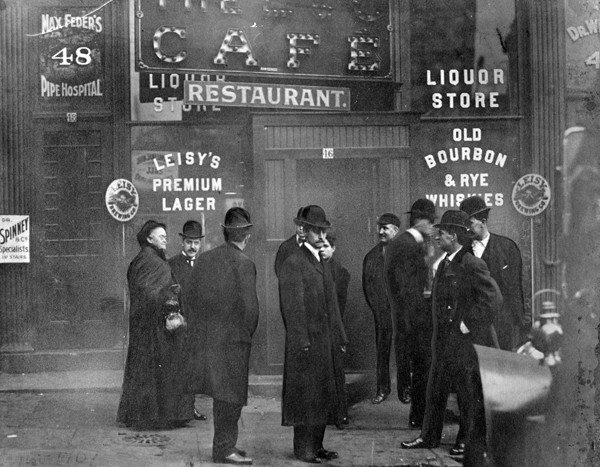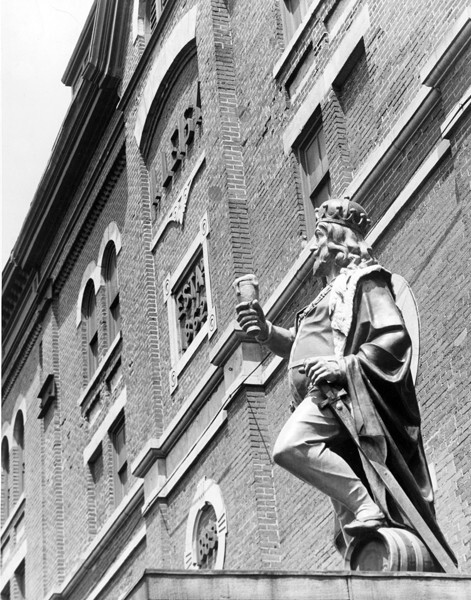Leisy Brewery

In 1873, Isaac Leisy and his two brothers (all originally from Bavaria in Germany) left their small brewery in rural Iowa and came to Cleveland after purchasing Frederick Haltnorth's brewery on Vega Avenue for $120,000. Haltnorth (who was also the proprietor of Haltnorth's Gardens -- a beer garden at East 55th Street and Woodland Avenue) had purchased the brewery in 1864 from Jacob Mueller, who originally opened it in 1858. Only weeks before purchasing Haltnorth's brewery, Isaac Leisy had been in Cleveland to attend the annual Brewer's Congress. Leisy must have been impressed with the opportunities for growth and prosperity in Cleveland, which was quickly becoming an industrial metropolis, as compared to those that existed in rural Iowa.
In the mid-1880s, Isaac Leisy (having bought out his brothers) renovated the old brewery and expanded its operations, constructing a multi-building, eight-acre campus along Vega Avenue and increasing beer production eightfold. The Leisy Brewery aimed to be as self-sufficient as possible, and to this end the brewery's grounds contained, for example, a bottling plant, stables for its fleet of horse-drawn delivery carriages, a cooperage, a blacksmith shop, and two 80-foot silos that held barley prior to its on-site malting. Self-sufficiency was important since competition among breweries in Cleveland at the time was fierce, with nearly twenty breweries operating in the city in 1890. To make matters more difficult for Leisy, in 1898 ten small Cleveland brewers joined the new Cleveland & Sandusky Brewing Co., a massive combination that signaled the brewing industry's turn towards consolidation. Isaac's son Otto took control of the company after his father's death in 1892 and promptly vowed to remain independent of the new combination. He wrote to the Plain Dealer in 1898, emphatically stating that "My firm has existed in Cleveland for over a quarter of a century; has prospered by honorable methods of trade, thereby obtaining, possessing and enjoying the confidence of the same. By its former methods my company proposes to preserve and maintain its trade, and in a fair way compete with its opponent, the huge beer trust."
Indeed, Leisy Brewing remained an independent, family-owned brewery throughout its entire history. It thrived in the decades before Prohibition, steadily increasing its sales and production. When Prohibition took effect in 1920 and brewing beer became illegal, the company made a short-lived attempt to produce non-alcoholic beverages. This proved to be unprofitable, and Leisy Brewing closed in 1923. Unlike some of Cleveland's other breweries which had also been forced to shut down during Prohibition, Leisy returned after the repeal of Prohibition in 1933. That year, Otto's son Herbert Leisy reopened the brewery, reequipping it with new machinery to replace the equipment that had been sold off during Prohibition. Industry consolidation, however, continued to chip away at Cleveland's small, independent breweries in the decades after Prohibition. Leisy Brewing finally closed in 1958, and its plant on Vega Avenue was demolished in the mid-1970s.
Images







